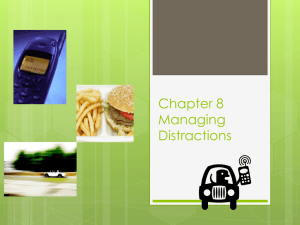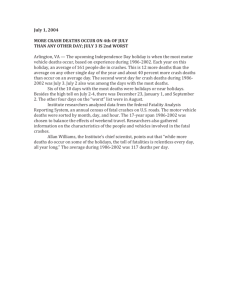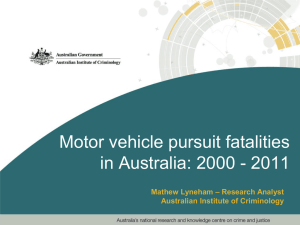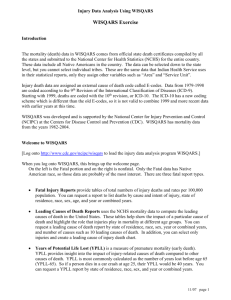Statistics and Distracted Driving
advertisement
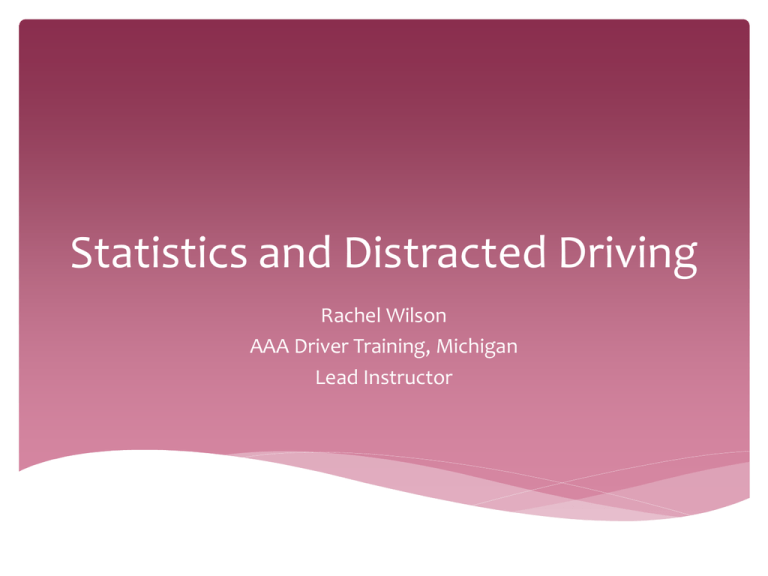
Statistics and Distracted Driving Rachel Wilson AAA Driver Training, Michigan Lead Instructor Statistics All statistics in the following slides are from iihs.org Statistics: Motor Vehicle Deaths Number of deaths in motor vehicle crashes 1980 – 51,091 1990 – 44,599 2000 – 41,945 2010 – 32,885 Statistics: Male vs. Female Motor vehicle crash deaths among 13-19 year-olds by gender 1980 – 73% of deaths were males 1990 – 69% of deaths were males 2000 – 66% of deaths were males 2010 – 65% of deaths were males Statistics: Motorcycles Passenger vehicle occupant and motorcyclist deaths as a percentage of all motor vehicle crash deaths 1980 – 10% of all motor vehicle crash deaths were motorcycles 1990 – 7% of all motor vehicle crash deaths were motorcycles 2000 – 7% of all motor vehicle crash deaths were motorcycles 2010 – 13% of all motor vehicle crash deaths were motorcycles Statistics: Fixed Object Crash Deaths in fixed object crashes by object struck Tree – 50% Utility Pole – 14% Traffic Barrier – 8% Embankment – 5% Ditch – 3% Culvert – 3% Fence – 2% Wall – 2% Building – 2% Highway wall support – 2% Bridge Pier – 2% Other – 6% How many people died in 2010 in motor vehicle crashes? 32,885 Statistics Statistics have a place in the driver training classroom and can be a useful learning tool, but they should be used with caution for several reasons: Statistics often “dumb down” the reality of something and make it seem less real. They are numbers, not people. Students often forget the actual number associated with statistics, losing its purpose. When several statistics are given, they all blend together and the impact is lost. Statistics change frequently. Different studies give us different results and driving behavior and car technology alter crash statistics all the time. A better way… An example I like to use in my classroom: Discuss speed and how it affects reaction time and braking distance. Understand the formula from AAA’s “Licensed to Learn” that reaction time = 1.5 x rate (unit = feet). Example is at 20mph, so reaction time = 30’ Not Distracted Not Distracted Ask the students How long does it take you to change the radio station or look at your phone to see who is calling? Distracted Distracted Distracted Example Makes it real. Students reactions. Leads into further discussions. How long does it take to text “LOL”? How long does it take to dial a phone number? Their gained understanding allows us to discuss how dangerous phone usage while driving is. In Summary Statistics can be useful. Don’t rely on statistics to get the message across. Know when to use them or not. Think of ways to get the point across differently. Thank you! Rachel Wilson AAA Driver Training Lead Instructor


